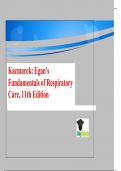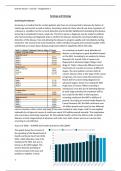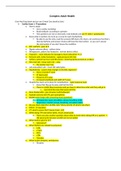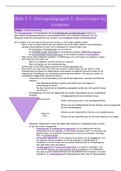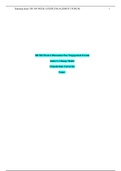Exam (elaborations)
Kacmarek: Egan's Fundamentals of Respiratory Care, 11th Edition
- Course
- Institution
Kacmarek: Egan's Fundamentals of Respiratory Care, 11th EditionCHAPTER OBJECTIVES 1. Define respiratory care. (Q: 4, 15) 2. Summarize some of the major events in the history of science and medicine. (Q: 18) 3. Explain how the respiratory care profession got started. (Q: 20) 4. Describe the his...
[Show more]
